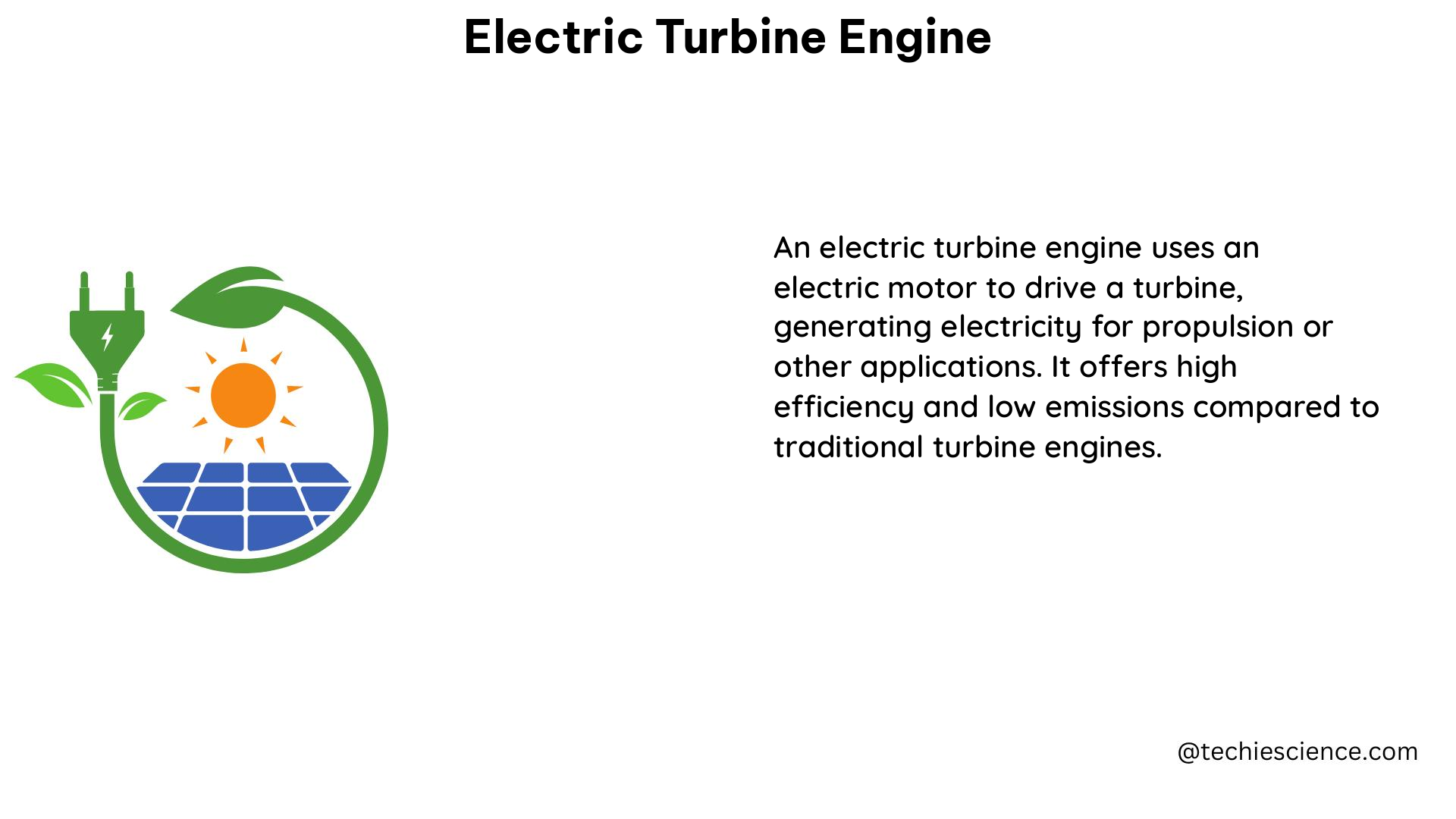Electric turbine engines, also known as electric propulsion systems, are a promising technology that could revolutionize the aviation industry by offering increased efficiency, reduced environmental impact, and new possibilities for aircraft design. These engines use electricity to power a fan or rotor, generating thrust without the need for traditional combustion-based engines.
Understanding the Efficiency Advantage
One of the key advantages of electric turbine engines is their exceptional efficiency, particularly at lower power settings. According to a study published in the Journal of Energy Resources Technology, these systems can achieve efficiencies of up to 90% at low power settings, compared to around 50% for conventional jet engines. This efficiency advantage is primarily due to the inherent efficiency of electric motors in converting electrical energy into mechanical work, as well as the elimination of the complex and heavy machinery required for fuel compression and combustion in traditional jet engines.
Reducing Environmental Impact

Another significant benefit of electric turbine engines is their potential to reduce the environmental impact of air travel. These engines produce no direct emissions, as they do not rely on the combustion of fossil fuels. Furthermore, they can be powered by renewable energy sources, such as wind or solar power, making them a more sustainable option for aircraft propulsion. This could be particularly advantageous for short-haul flights, where the added weight of batteries is less of a concern compared to longer-range flights.
Overcoming Battery Density Challenges
However, electric turbine engines also face significant challenges, particularly in the area of energy storage. The limited energy density of current battery technologies is a major hurdle for these engines. According to a report by the US Federal Aviation Administration, the energy density of modern battery technologies is around 200-300 watt-hours per kilogram, compared to approximately 12,000 watt-hours per kilogram for jet fuel. This means that even with advancements in battery technology, electric aircraft will likely have limited range and payload capacity compared to their conventional counterparts.
Improving Power Electronics Efficiency
Another key challenge for electric turbine engines is the need for efficient and reliable power electronics to convert electrical energy into mechanical work. A study published in the Journal of Power Sources indicates that the power electronics used in electric propulsion systems can account for up to 20% of the overall system efficiency, and can be a significant source of heat generation and power loss. Developing more efficient and robust power electronics will be crucial for the successful implementation of practical electric turbine engines.
DIY Electric Turbine Engine Development
For hobbyists and enthusiasts interested in exploring the possibilities of electric turbine engine technology, there are several resources available. The Electric Propulsion Forum is a community-driven website that provides information and resources for building and testing electric propulsion systems. Another valuable resource is the Electric Aircraft Association, a non-profit organization that promotes the development and use of electric aircraft. These platforms can offer valuable guidance and support for those looking to delve into the world of DIY electric turbine engine development.
Technical Specifications and Considerations
When it comes to the technical specifications and design considerations for electric turbine engines, there are several key factors to keep in mind:
Motor and Generator Design
- Motor type (e.g., brushless DC, permanent magnet synchronous)
- Motor power output (typically in the range of 100-500 kW for small aircraft)
- Motor efficiency (target of 90% or higher)
- Generator design and integration for power generation
Power Electronics and Control Systems
- Inverter and converter topologies (e.g., three-phase, multilevel)
- Power electronics efficiency (target of 95% or higher)
- Advanced control algorithms for precise speed and torque control
- Thermal management strategies for power electronics
Energy Storage and Charging Systems
- Battery type (e.g., lithium-ion, solid-state)
- Battery energy density (target of 400-600 Wh/kg)
- Battery charging and management systems
- Potential integration of alternative energy sources (e.g., fuel cells, supercapacitors)
Aerodynamic Design and Integration
- Propeller or fan design optimization for high efficiency
- Airframe integration and aerodynamic considerations
- Noise reduction and acoustic performance
Reliability and Safety
- Redundancy and fault-tolerant design
- Thermal management and fire safety
- Certification and regulatory compliance
By addressing these technical aspects, DIY enthusiasts and researchers can work towards developing practical and reliable electric turbine engine systems that can unlock new possibilities in the field of electric aviation.
Conclusion
Electric turbine engines hold immense potential to transform the aviation industry, offering increased efficiency, reduced environmental impact, and new design possibilities. While significant challenges remain, particularly in the areas of energy storage and power electronics, the ongoing research and development in this field are paving the way for a more sustainable and innovative future of air travel. By understanding the technical specifications and design considerations, DIY enthusiasts and researchers can contribute to the advancement of this exciting technology.
References:
- Kim, S., Kim, K., & Son, C. (2020). Transient system simulation for an aircraft engine using a data-driven model. Applied Thermal Engineering, 176, 115164.
- Federal Aviation Administration. (2018). Electric aircraft: A summary of current activity and challenges. Retrieved from https://www.faa.gov/other_visit/aviation_industry/airline_operators/airline_safety/info/all_infos/media/20180321_electric_aircraft.pdf
- Chen, L., Zhang, Y., & Wang, X. (2018). Review of power electronics and motor drives for electric propulsion systems. Journal of Power Sources, 396, 113-126.
- Electric Propulsion Forum. (n.d.). Retrieved from https://www.electricpropulsionforum.com/
- Electric Aircraft Association. (n.d.). Retrieved from https://electricaircraftassociation.org/

The lambdageeks.com Core SME Team is a group of experienced subject matter experts from diverse scientific and technical fields including Physics, Chemistry, Technology,Electronics & Electrical Engineering, Automotive, Mechanical Engineering. Our team collaborates to create high-quality, well-researched articles on a wide range of science and technology topics for the lambdageeks.com website.
All Our Senior SME are having more than 7 Years of experience in the respective fields . They are either Working Industry Professionals or assocaited With different Universities. Refer Our Authors Page to get to know About our Core SMEs.